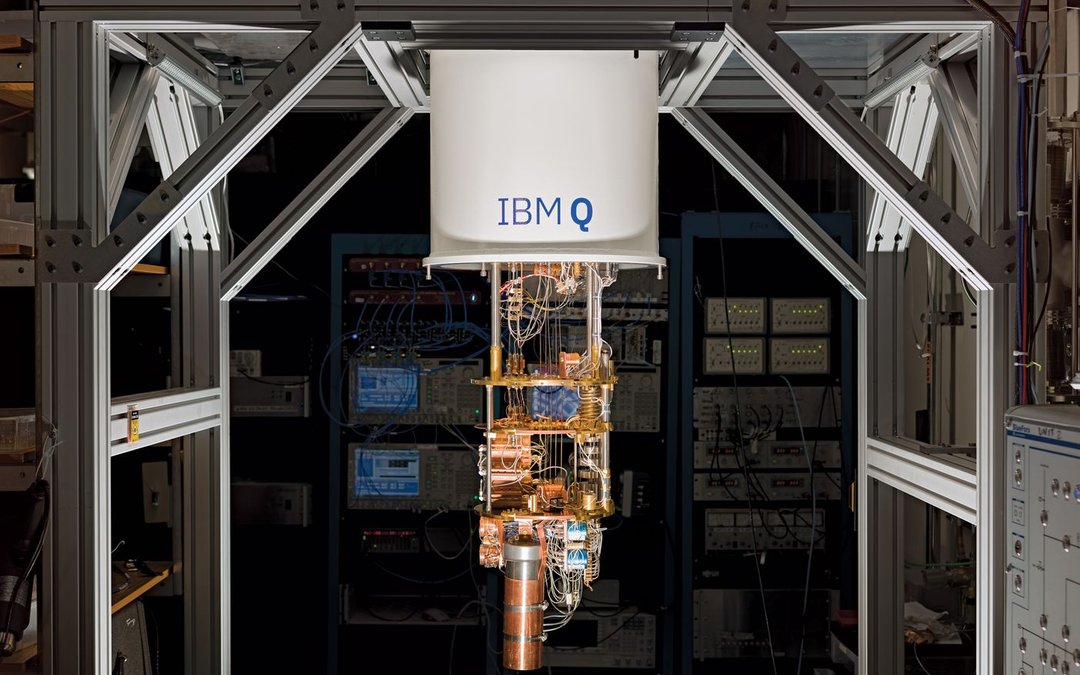
What is Quantum Computing?
By: Aysha Naurein
Computers have today become so common that it would be difficult for us to think of a life devoid of them. It helps us do a lot of work simultaneously, quickly, effectively and has made life a lot easier. There are better versions of computers coming out every day with advanced features. Computers are getting faster and more intelligent and the race is always on to develop a better model. One such computer which can be considered to be the biggest invention of today’s technology is the ‘Quantum Computer’. All the others can be called ‘Classical Computers’.
Quantum computers work on the basic principles of Quantum Mechanics. While classical computers encode information as bits using binary codes (0 and 1), quantum computers use ‘qubits’ or quantum-bits. Just like the bit is to a classical computer, the qubit is the fundamental unit or the simplest building block of quantum information. An electron may be considered as a qubit with the ground state representing 0 and the excited state representing 1. The same electron can be considered in terms of spin where spin up is 1 and spin down is 0. Likewise, there are many systems that can be taken as qubits.
What is Quantum Computing?
The prediction of the development of quantum computing (QC) was made by several famous scientists, Richard P Feynman, for instance. But it was Paul A Benioff who first successfully explored the feasibility of QC.
There are two very interesting properties of quantum mechanics which are useful in QC. These properties define the advanced abilities of such computers.
- Superposition – A classical bit can take either of the values, 0 or 1. Only one value can exist at a particular instant of time which could be represented by the absence or presence of current (There are several other ways of representation just like in qubits). In a quantum bit, however, both the states can occur simultaneously!!
This can be understood with the famous thought experiment by Erwin Schrӧdinger. I’ll give a brief idea of how it works. A cat is inside a box or a closed cage with a tiny bit of radioactive material and a vial of poison. There is a very sensitive setup in the cage which identifies radioactive decay and breaks the vial releasing the poison which kills the cat. There is a 50% probability of radioactive decay so there is an equal chance for the cat to survive or die. As per quantum mechanics, it can be said that as long as the cat is inside the closed cage, it is both dead and alive and once the cage is opened to check, the cat assumes either state.
Though this may not be practically possible in a classical entity like a cat, quantum entities like atoms behave this way.
- Entanglement: This is another astounding property defining quantum systems. It is possible to induce an interaction between two qubits forming a pair which is like entangling them together. The state on one qubit will generally be opposite that of the other. It is surprising to note that this entanglement will be intact even if the qubits are very far apart, say in a different country even!
Importance of Quantum Computation
I do not believe that quantum computers will one day replace the normal classical computers that we use in our daily life. However, there are certain areas in which quantum computers are advantageous over classical computers and development in this area is definitely a boon.
Because of superposition, the computations of all the possibilities in a problem are done simultaneously and the required output is chosen whereas in classical computers the method of trial and error is adopted which obviously takes longer time. Let us consider an example. If a classical computer has two bits, the possible outcomes are:
00, 01, 10, 11
The bits can be in any of the four states at a particular moment. In a quantum computer, on the other hand, the two qubits can be in all the four states at that very instant! It can be represented in the form of a ‘ket’ notation –
|00>, |01>, |10>, |11>
So if we have a hundred qubits, the number of computations a quantum computer can do simultaneously is 2100 = 1.267×1030!! Because of this, the quantum systems can be called ‘exponentially powerful’.
Similarly with entanglement, if the state of one qubit is known, it is possible to find the state of the other qubit. This is a very useful tool in quantum circuits.

The existence of Quantum Computers
Though the stage of development of quantum computers is still at infancy, several prototypes have been constructed. The first successfully built quantum computer is ‘D-wave One’ in 2007 in California. As of now a number of companies IBM, Google, and Microsoft, to name a few, are competing to develop better versions of these computers.
Applications
The known applications of QC include cryptography, increased memory storage, and artificial intelligence. In Science, it can be used for applications ranging from molecular modeling to complex calculations. Surely there will be many other applications when more of QC is practically realized. Quantum Computing is, without doubt, going to take the world by storm. Right now our scientists are racking their brains so as to produce a complete form of the much-awaited quantum computer. Until then we can sit back and watch.







Leave a Reply